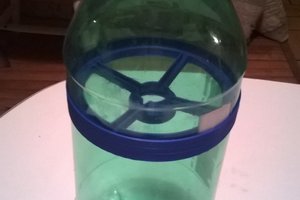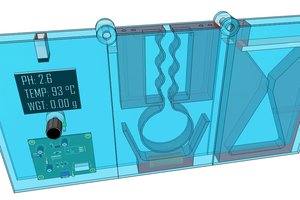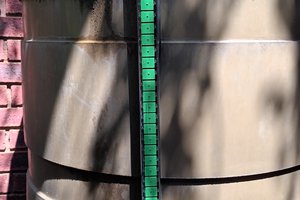I am entering this quick fix to the Repairs You Can Print contest and would like it to be considered in the Organisation category in recognition of the advice and tutoring I received from fellow members of Reading Hackspace - I couldn't and wouldn't have done it without them.
The mains water supply is delivered to my house through an old iron pipe which is starting to corrode, which means that the water comes mixed with iron flakes. The iron flakes build up and I periodically have to unscrew the ends of my taps (faucets to US readers) to let the flakes out. Although a bit irritating, this is not normally a huge problem. However over the Christmas break the flow on the 'hot' side of my kitchen-sink mixer tap became so weak that it no longer triggered the combi-boiler to produce hot water. Unscrewing the meshed cap from the end of the tap made no difference - the blockage was further back up the hot water pipe.
My attempts to shift the blockage by creating a pump action by repeatedly turning an inline valve on and off, and by using strong magnets to move the flakes (bit of a long-shot), failed. The best advice of the plumbers that I called out was to replace the entire stretch of copper piping from the boiler to the kitchen sink (hmmm... not-so-vested interest in fitting copper pipes methinks).
The solution turned out to be very simple and much, much cheaper.
In the end of the next of the tap was a small cartridge containing mesh to break up the flow of water held in place by a threaded ring. All I had to do was make a dimensionally identical but solid replacement to act as a cap to block the end of the tap. I could then redirect the mains pressure cold water back up the hot pipe to dislodge the debris from where it was trapped ('reversing the polarity of the neutron flow', if you will).
V simple. Turn hot tap on, isolate boiler from the hot water output pipe, let some of the hot water dribble out, fit the plug, and turn on the cold tap v quickly pushing cold water back up the hot pipe. Repeat three times and the pipe was clear!
Only problem was that I had used neither 3d design software nor a 3d printer before, hence the need to call on the help of friends at the hackspace who very patiently brought me up to speed with Fusion 360, Cura and the hackspace's 3d printer, so that I could make the part.
As a first 3d print it was immensely satisfying - having previously avoided the plastic-squirting contraption like the plague, I now can't keep off the thing. A 3d printing convert.

 Brian
Brian
 ken.do
ken.do
 M. Bindhammer
M. Bindhammer